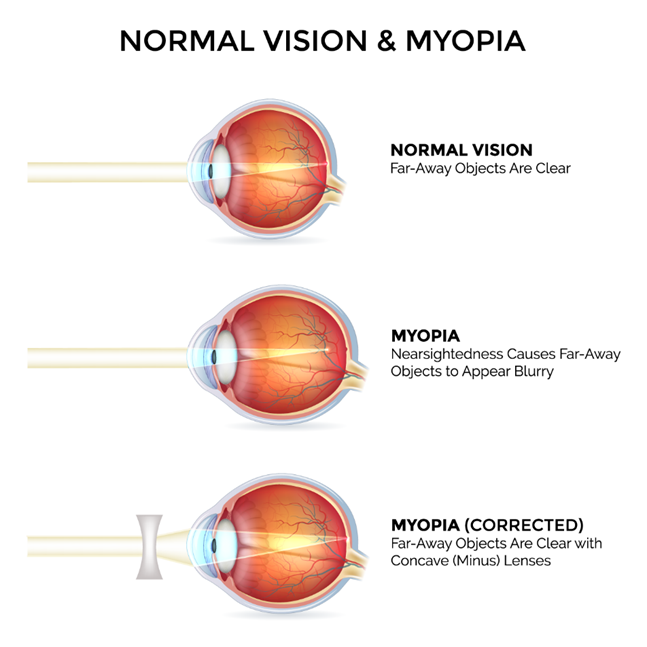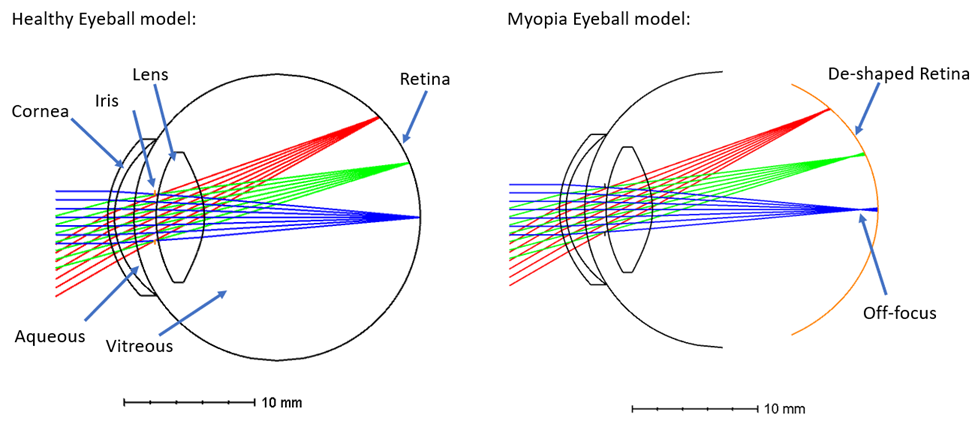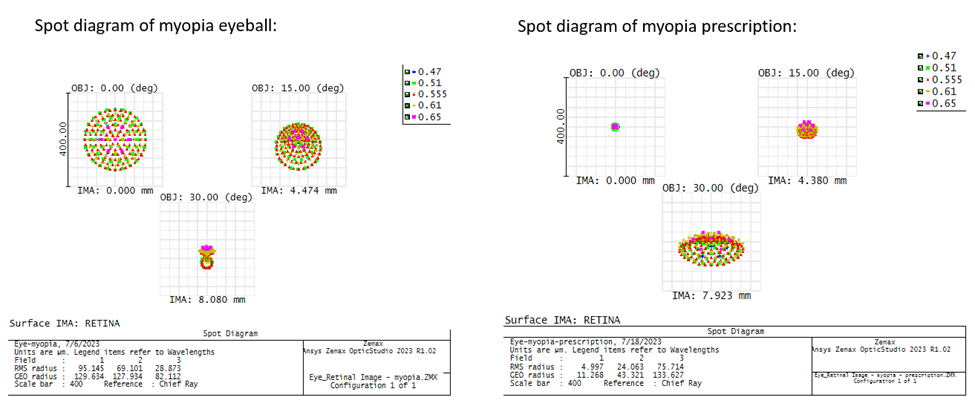Myopia, commonly known as nearsightedness, is a refractive error of the eye that causes distant objects to appear blurry while close objects remain clear. It is a common vision condition and usually occurs when the eyeball is too long or the cornea (the clear front part of the eye) is too curved. As a result, light entering the eye focuses in front of the retina instead of directly on it, leading to blurred vision.
Figure 1 demonstrates eyes with normal vision, myopia and eyeglass corrected myopia. In normal vision, the main filed beam is focused on the retina well, while the myopia eye makes the main field eye off focus. The main filed beam usually denotes objects far away from the eye. With prescription glasses, the focal point can be adjusted, to refocus on the retina.

Figure 1 Schematics of normal vision, myopia and prescription corrected myopia eyeballs
Figure 2 compares the layouts of Zemax model of a healthy eyeball on the left and a myopia eyeball on the right. The healthy eyeball focuses most fields’ light projected from remote distance on the retina. In the myopia eyeball, with a de-shaped retina, obvious off-focus is presented at all fields. A remote scene imaged by the both models is shown in Figure 3.

Figure 2 Ansys Zemax models of normal vision eyeball and myopia eyeball

Figure 3 Comparison of a remote scene sensed by a healthy eyeball a myopia eyeball
Below in Figure 4, a prescription lens is added to correct the blur. Like most prescription glasses in the market, the piece of glass has a convex-concave structure. Center of the glass is thinner than edge to shift light focus ahead. Here are some assumptions in the Zemax model. The glasses-eyeball distance and the material of the glasses (polycarbonate) are fixed. The outer side curvature of the prescription glasses is fixed for fabrication. Then the inner side curvature is optimized by Operand REAY with constraints of minimizing zero pupil heights at the image surface. The material here is polycarbonate. This Zemax optimization process is like vision check and prescribing in an optometry office.

Figure 4 Prescription correction of myopia eyeball
Figure 5 compares the remote scene in Figure 3, sensed by with myopia eye with prescription glasses. The sight is much improved, almost as clear as the healthy eye.

Figure 5 Remote scene sensed by corrected myopia eye
The spot diagram comparison in Figure 5 suggests much improved focus quality with the prescription glasses (right) than naked myopia eye (left). Modulation transfer function (MTF) comparison in Figure 6 suggests significant improvement in main field at 20lp/mm.

Figure 6 Spot diagrams of comparison of myopia eyeball and the myopia eyeball with prescription glasses

Figure 7 MTFs comparison of myopia eyeball and the myopia eyeball with prescription glasses
Jul 21, 2023 8:03:33 AM
